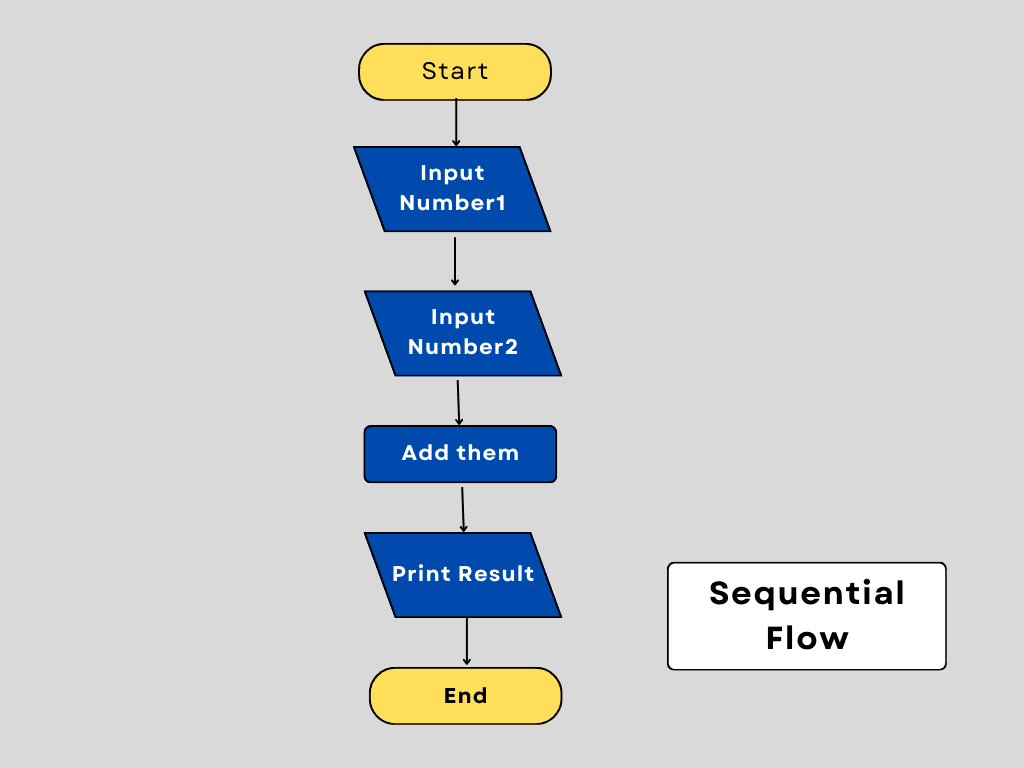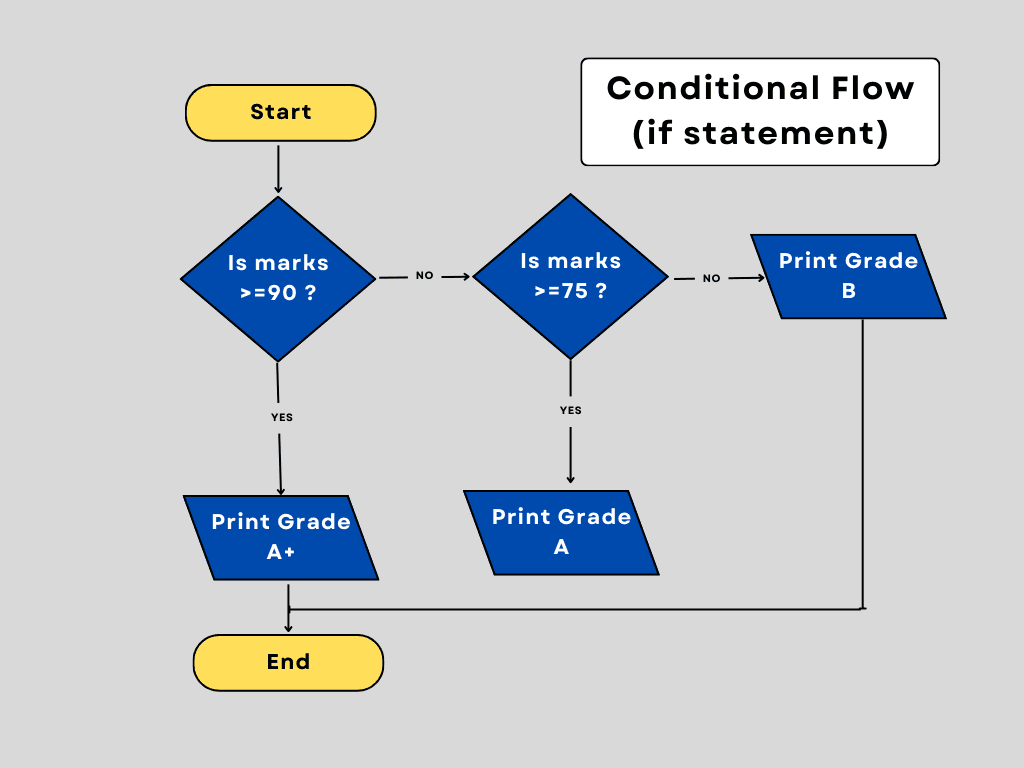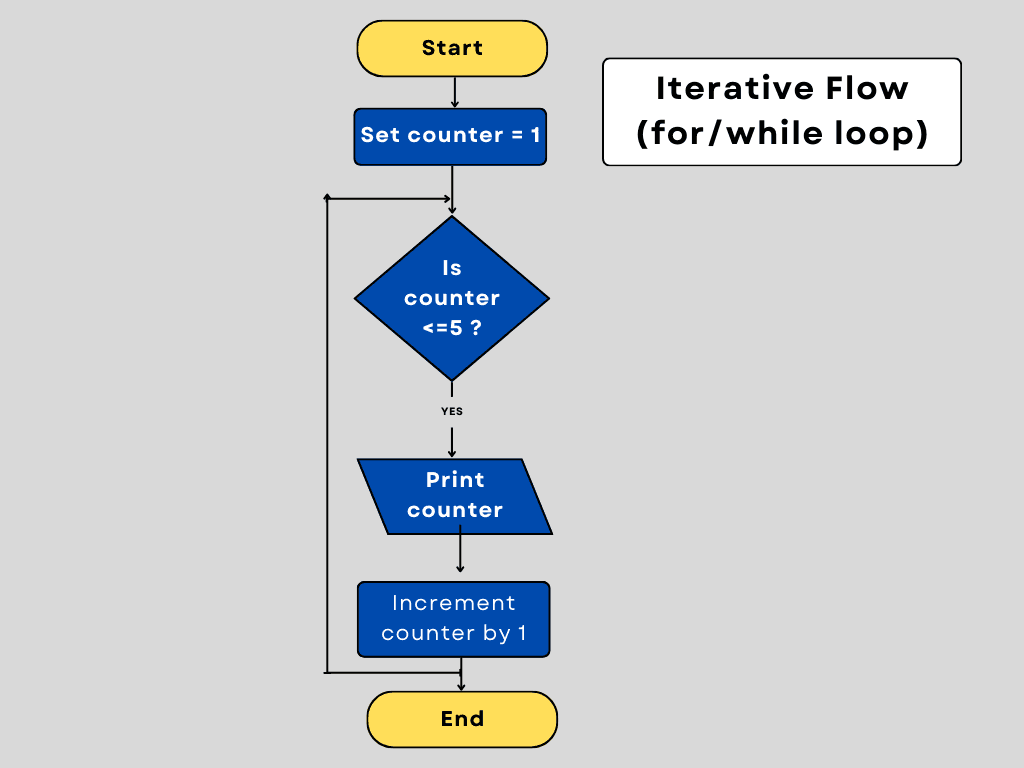Understanding the Flow of Control in Python
Every program is a set of instructions. But in what order are those instructions executed? The flow of control is the path a program takes from start to finish. Think of it like a recipe: some steps you follow one after another, some you only do if a certain condition is met (like adding extra sugar if you have a sweet tooth), and some you repeat multiple times (like stirring the batter).
In Python, there are three fundamental ways to control this flow:
- Sequential Flow: The default, straight-road path.
- Conditional Flow: The forked path, where you make a decision.
- Iterative Flow: The circular path, where you repeat actions.
Understanding these structures is the key to moving beyond simple scripts and writing powerful, intelligent programs.
The Three Pillars of Program Flow
Sequential Flow: The Straight Path
This is the most straightforward type of control flow. In sequential flow, the Python interpreter executes statements one after another, from top to bottom, in the exact order they are written. There are no branches, no decisions, and no repetitions.
Characteristics:
- Predictable: The execution path is always the same.
- Default Behavior: This is how Python runs code unless you tell it otherwise.
- One-and-Done: Each statement is executed exactly once.
Example: A Simple Calculation
Let’s see a simple program that calculates the area of a rectangle. Each line is executed in sequence.
# Step 1: Assign the length
length = 10
print(f"Length is set to: {length}")
# Step 2: Assign the width
width = 5
print(f"Width is set to: {width}")
# Step 3: Calculate the area
area = length * width
print(f"Calculating area...")
# Step 4: Print the final result
print(f"The area of the rectangle is: {area}")Output:
Length is set to: 10
Width is set to: 5
Calculating area...
The area of the rectangle is: 25Flowchart Visualization
The flowchart for sequential execution is a simple, straight line, showing the unambiguous path from start to end.

Summary: Comparing the Control Flows
| Flow Type | Description | When to Use | Python Keywords | Analogy |
|---|---|---|---|---|
| Sequential | Executes code line by line, from top to bottom. | The default for all programs. | (None) | Following a simple recipe. |
| Conditional | Executes a block of code only if a condition is true. | When you need to make decisions. | if, elif, else | A fork in the road. |
| Iterative | Repeats a block of code multiple times. | For automating repetitive tasks. | for, while | A race car on a track. |
Mastering these three flows is the first major step toward becoming a proficient Python programmer. Every complex program you see is just a combination of these simple, powerful ideas.
Combining All Flows
In real-world scenarios, programs often combine all three types of control flows:
- Sequential: For regular steps like initialization and cleanup.
- Conditional: For decision-making based on user inputs or results.
- Iteration: For repetitive tasks like processing data.
Example:
# Combining Sequential, Conditional, and Iterative Flows
print("Welcome to PythonForAll")
marks = int(input("Enter your marks: "))
if marks >= 50:
print("You passed")
for i in range(3):
print("Congratulations")
else:
print("Better luck next time")Summary of Flow of Control
| Type | Description | Example |
|---|---|---|
| Sequential | Statements executed one after another. | print("Hello") followed by print("Bye") |
| Conditional | Executes code based on conditions. | if x > 0: print("Positive") |
| Iterative | Repeats code multiple times. | for i in range(5): print(i) |

